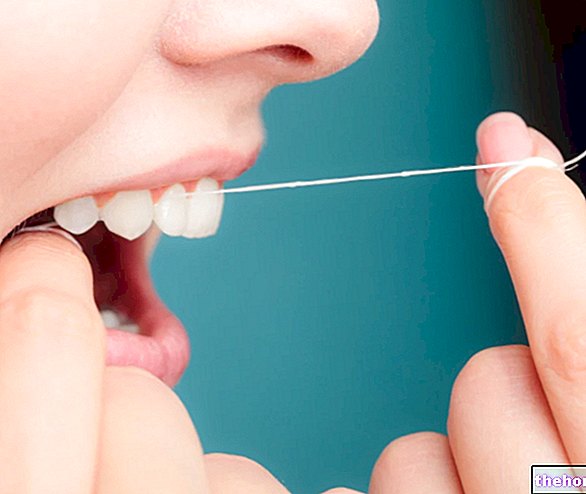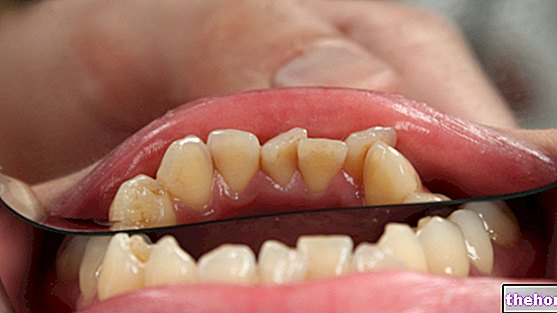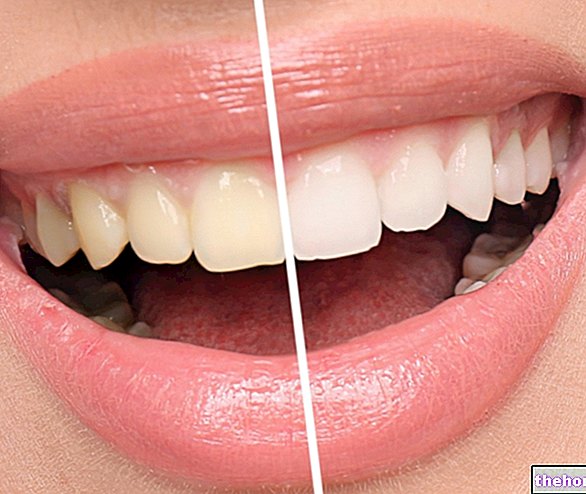Wetting and lubricating materials: glycerin, sorbitol and polyethylene glycol. They have the function of retaining humidity and preventing the hardening of the toothpaste in contact with the air.

- Detergents such as sodium lauryl sulfate and cocamidopropyl betaine: they are used to form the foam and remove the substances removed with the toothbrush, which remain incorporated in the bubbles.
- Aromas: there are several substances that are added to the toothpaste, such as menthol, thymol, peppermint, cinnamon and other essential oils.
- Acaryogenic sweeteners: sorbitol (also has a preservative function), saccharin and xylitol (also has an anti-plaque function).
- Functional substances such as fluorine, hydroxyapatite, chlorhexidine etc.
The fluorine present in the mouth has the ability to penetrate the most superficial layers of the enamel and bind to the calcium ions that form hydroxyapatite, anchoring them together in order to make them more resistant to flaking by plaque acids.
The use of fluorinated toothpaste results in a 33.3% reduction in the formation of new caries compared to the control placebo.
Fluoride gels and special toothpastes with a high fluoride content are particularly suitable for intensive caries prophylaxis and for the treatment of sensitive necks. Generally these products are used once a week to complement daily oral hygiene. In special cases, they can be applied every day for a limited period. Agree to use these products with your dentist or dental hygienist.
PLEASE NOTE: for the oral hygiene of children under the age of six it is advisable not to use toothpastes containing fluoride in concentrations higher than 500 ppm (parts per million). The risk is that the child swallows the toothpaste, absorbing excessive quantities of fluoride and therefore suffering from the so-called fluorosis This fluoride "intoxication" manifests itself with aesthetic and functional changes of the tooth enamel, as well as in the most severe cases with similar problems at the level of the bones.
Toothpastes based on hydroxyapatite
As mentioned in the previous paragraph, hydroxyapatite is a natural component of bones and teeth, which works by creating a physiological barrier against hypersensitivity, plaque, tartar and tooth decay. Hydroxyapatite-based toothpastes can therefore be used to strengthen tooth enamel.
Anti-plaque toothpastes
They contain substances with direct or indirect antibacterial action, and as such they prevent the excessive accumulation of plaque. These include sodium chloride (table salt), which stimulates the production of saliva (which normally contains buffering and antibacterial substances) , iodine (with antibacterial action), and metal salts, such as zinc, tin and aluminum (which induces precipitation of proteins with the formation of a protective film on the oral cavity). Enzymes such as lactoperoxidase, glucose oxidase and amyloglucoxidase can also be added to the anti-plaque toothpaste, which hinder bacterial proliferation in the oral cavity.
Antiseptic toothpastes
Unlike the previous ones (commercial or cosmetic), they are anti-plaque toothpastes containing medicinal substances or active ingredients with direct antiseptic action. They must be prescribed by the dentist or dental hygienist and used according to specific instructions, for limited periods of time.The chemical disinfectant and anti-plaque agent par excellence is called chlorhexidine; however, it is advisable not to use toothpastes containing chlorhexidine for too long periods, due to the possible chromatic alterations of the enamel.
Other antiseptic substances, indicated for the control of bacterial plaque and for the treatment of periodontal problems, are represented by triclosan, sanguinaria, tibenzenium idouro and quaternary ammonium salts.
Anti-tartar toothpastes
Characteristic ingredient of anti-tartar toothpastes is represented by pyrophosphates, which have the function of preventing the precipitation of calcium salts. The association between pyrophosphate and calcium salt has proved even more useful in preventing calcification of bacterial plaque.
Whitening toothpastes
Generally, these products contain detergents and low abrasive microspheres, which remove by contact and rubbing the external pigmentations of the teeth, caused by food and drinks, smoke, plaque and tartar. Depending on the level of abrasiveness, some of these products can be used daily, while others must be alternated with commonly used toothpastes.
Whitening Toothpastes Online
Black Whitening Toothpaste
This activated charcoal whitening toothpaste uses essences extracted from Aloe Vera and charcoal microparticles. It reduces the wear of the surface of the teeth, protects the enamel and restores the whiteness of the teeth. Thanks to its spongy structure, it can also absorb bad smells and stains left by food dyes, so as to maintain the freshness of breath for a long time and make the smile white and bright.
For optimal action, use dry activated charcoal toothpaste, without wetting it with water before brushing.


Charcoal Whitening Toothpaste
This toothpaste with activated charcoal for whitening teeth is 100% natural, does not contain additives, preservatives or other similar substances.
The activated carbon present in the product removes dental stains and counteracts the discoloration of the enamel, whitening the teeth and brightening the smile. Thanks to its porous surface, it also absorbs plaque, dirt and dental stains, removing them safely and effectively.
At the same time, bentonite clay strengthens the action of charcoal, while peppermint exerts a soothing action, fights bacteria, reduces inflammation and brings a sense of freshness to the whole mouth.
The product, also suitable for sensitive teeth, can be used without limitations until the desired result is achieved.


Desensitizing toothpastes (against sensitive teeth and gums)
They mostly contain fluorine and hydroxyapatite salts, possibly assisted by strontium chloride, potassium nitrate and zinc citrate. Triclosan, in addition to an important anti-plaque action, is also used successfully in the presence of gingivitis. The purpose of these toothpastes is to remineralize enamel and dentin, to make teeth less sensitive to heat, cold, sweets or acids.
To make the most of their action, after cleaning the teeth as usual, place a small amount of toothpaste close to the gum with a finger, squeezing it on the outer and inner sides of sensitive teeth. After leaving the product to act for a few minutes, it is expelled without rinsing.
Another category of active substances, able to safeguard the health of the gums and mucous membranes of the oral cavity, is that of the so-called film-forming agents, such as delmopinol, lipophilic complexes and hexetidine, local anesthetic agent, astringent, anti-plaque and deodorant. During the use of these toothpastes a lipophilic film is formed which is deposited on the teeth and gums, protecting them mechanically.
Sponsored content: My-personaltrainer.it presents products and services that can be purchased online on Amazon and / or other e-commerce. Every time a purchase is made through one of the links on the page, My-personaltrainer.it could receive a commission from Amazon or from the other e-commerce mentioned. We inform you that the prices and availability of the products are not updated in real time and may change over time, so we invite you to check availability and price on Amazon and / or on other e-commerce mentioned.




























